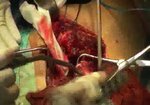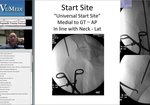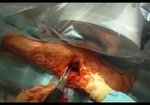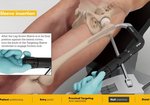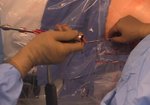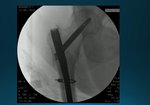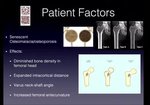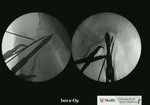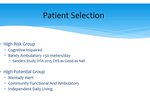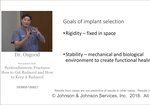Playback speed
10 seconds
Minimal Incision Technique: Cephalomedullary Nail Placement for Intertrochanteric Hip Fracture
1,981 views
December 19, 2020
This video demonstrates a minimal incision technique for short cephalomedullary nailing using the Zimmer Natural ...
read more ↘ Nail system and a Synthes opening reamer. A technique tip for speed and efficiency is also shown, demonstrating placement of the femoral lag screw and distal interlocking screw simultaneously.
Keeping incisions small may minimize risk of contamination, infection and drainage, especially in patients who may soil themselves. In addition to being more cosmetic, smaller incisions also mean less skin to heal in already often malnourished patients, and less OR time spent on closure.
The key to this technique is using a nailing system with a high offset guide and a jig that is the same diameter as the proximal diameter of the nail. That way, the jig does not get caught on skin during insertion of the nail. A standard Zimmer reamer may be used during this technique, but a soft-tissue protector is needed for this and may increase your incision size, but only by a few mm.
Patient and family consent was obtained prior to production of this video.
There are no conflicts of interest to report in this video.
Thank you to Dr. Tammer Raouf -- the resident who assisted me during this case.
↖ read less
read more ↘ Nail system and a Synthes opening reamer. A technique tip for speed and efficiency is also shown, demonstrating placement of the femoral lag screw and distal interlocking screw simultaneously.
Keeping incisions small may minimize risk of contamination, infection and drainage, especially in patients who may soil themselves. In addition to being more cosmetic, smaller incisions also mean less skin to heal in already often malnourished patients, and less OR time spent on closure.
The key to this technique is using a nailing system with a high offset guide and a jig that is the same diameter as the proximal diameter of the nail. That way, the jig does not get caught on skin during insertion of the nail. A standard Zimmer reamer may be used during this technique, but a soft-tissue protector is needed for this and may increase your incision size, but only by a few mm.
Patient and family consent was obtained prior to production of this video.
There are no conflicts of interest to report in this video.
Thank you to Dr. Tammer Raouf -- the resident who assisted me during this case.
↖ read less
Comments 4
Login to view comments.
Click here to Login

